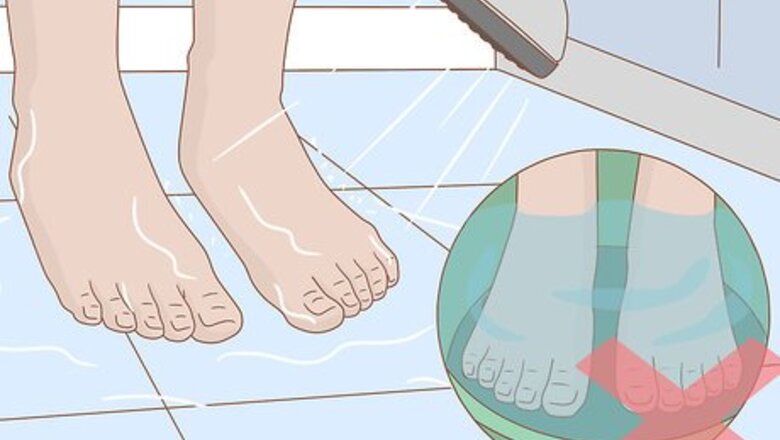
views
Practicing Good Hygiene
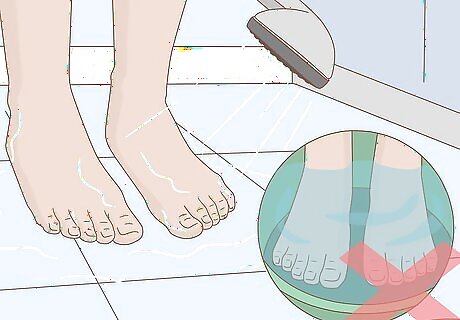
Keep your feet clean. Wash your feet every day with warm water and a mild cleanser. Even if you don’t shower each day, take a few minutes to wash your feet in a sink or tub. Avoid soaking your feet, however, as this can strip away natural oils. Washing your feet daily will keep your skin clean and bright, prevent odor, and can prevent corns, infections, ingrown toenails, and calluses.
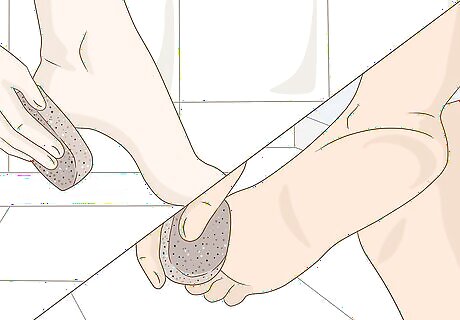
Exfoliate and scrub. For softer feet, remove dead skin cells and improve circulation by gently scrubbing your feet every day with a pumice stone. Focus especially on your heels and toes. Don’t scrub too hard, or this will promote a thick and protective layer of skin to grow. Pumice stones are a great way to remove broad calluses on your feet, especially around your heels.

Keep your feet dry and your socks clean. After you wash your feet, swim, shower, or get your feet wet, thoroughly pat them dry with a clean towel. Be especially careful to dry the area in between your toes. Change your socks every day, and always put on clean socks after washing your feet. Socks and feet that are dry and clean are the best defense against foot odor.
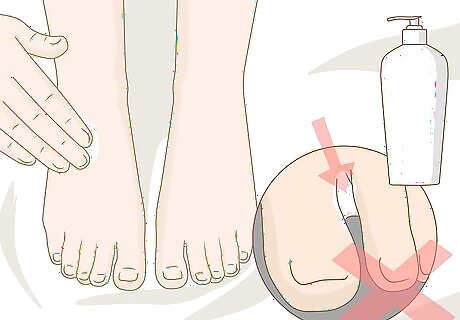
Moisturize daily. Keeping your feet moisturized will keep the skin soft and supple. After you wash and dry your feet, massage your favorite moisturizer into the skin before putting on clean socks. Don’t moisturize between your toes. If this area stays damp or wet, it can lead to fungal growth and infection.
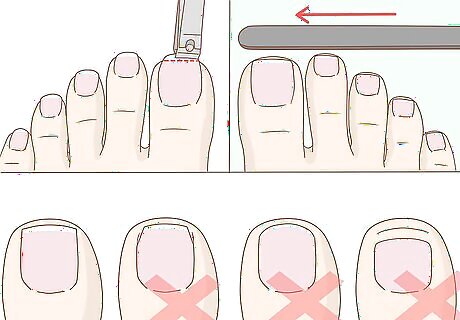
Take care of your nails. Cut your toenails regularly, but never too short. If your nails are too short, dirt and fungus can get in between the skin and nail and cause an infection. Clean under your nails with a nail brush, clean toothbrush, or a rubber or wooden manicure stick. Avoid ingrown nails by cutting your toenails straight, not at an angle or rounded at the edges. To smooth the edges down after trimming, use an emery board and file gently in one direction only. Nail polish is acceptable to use on healthy toenails once in a while, but don’t apply polish to unhealthy nails or to cover up discolored nails—this could be a sign of infection and covering it with polish will prevent it from clearing up.
Eating and Exercising for Foot Health

Consume plenty of calcium. Everybody knows that calcium helps to build strong bones, but many people don’t realize that osteoporosis, or bone loss, often shows up first in the feet. No matter your age, your body and feet need between 1,000 and 1,300 mg of calcium per day to stay strong and healthy. Good dietary sources of calcium include: Dark green vegetables, such as collards, kale, spinach, bok choy and broccoli Edamame, soybeans, and white beans Figs and oranges Sardines and salmon Almonds
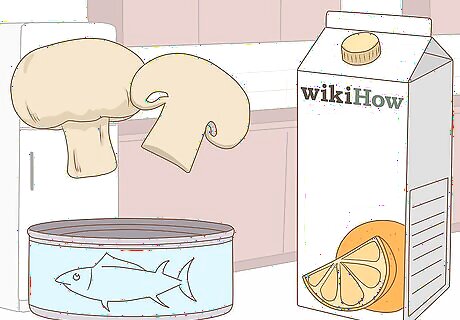
Get enough vitamin D. Vitamin D is another necessary daily nutrient, in part because it helps our bodies absorb the calcium we need for strong bones and healthy feet. On a daily basis, we need between 400 IU to 1,000 IU of vitamin D. The main source of vitamin D is sunlight, but there are also dietary sources, including: Mushrooms Fortified orange juice, almond milk, tofu, breakfast cereal, and oatmeal Liver Mackerel and canned tuna
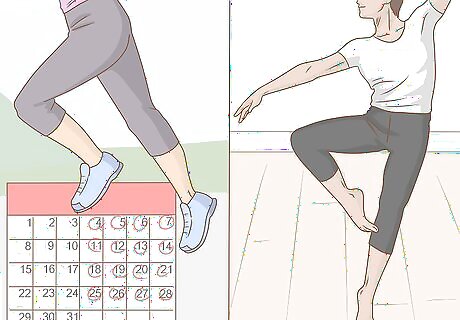
Work your body. Regular exercise will keep your entire body functioning properly, including your feet. Workout your body three to five times per week, for at least half an hour, with activities like running or jogging, cycling, swimming, walking, dancing, weight lifting, and hiking. Moderate exercise will also help prevent and manage osteoporosis by promoting bone health.
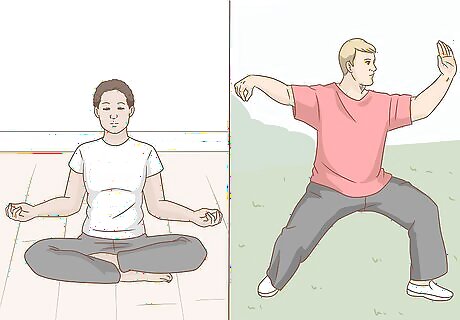
Work on your balance. Your feet are meant to evenly bear the weight of your entire body, but if you are unbalanced and don’t spread your weight evenly, this can cause problems for your feet, legs, hips, and back. Balance promoting exercises include: Yoga Tai chi Qigong The Feldenkrais Method
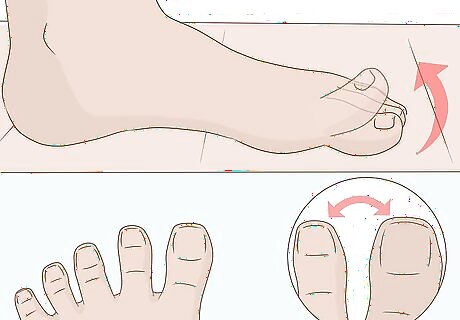
Exercise your toes and feet. This will keep your toes and feet active and healthy. Start with a couple of minutes each day and work your way to five or 10 minutes. To work out your feet and toes, start by removing your shoes and socks. Then: Place your foot flat on the floor, or sit down with your legs in front of you. Work on lifting each toe individually. After one to two minutes, work on spreading your toes apart and away from each other, just like splaying your fingers.
Avoiding and Addressing Medical Issues
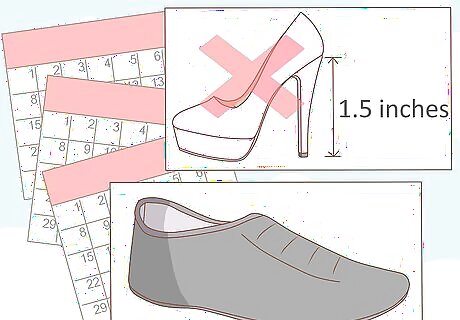
Wear the right shoes. Wear comfortable and supportive shoes for daily activities, proper sports footwear for activities and exercise, and avoid heels over 1.5 inches (four cm) for daily use. Proper footwear is especially important during exercise because the wrong shoe can lead to injuries and sprains. Avoid wearing flip flops too often in the warmer months, as they don’t provide any support and can cause foot pain. Wear sturdy shoes with about a 1–1.5 in (2.5–3.8 cm) heel. Make sure your shoes provide proper arch support, and wear orthotics or custom orthotics for additional support if you need it.
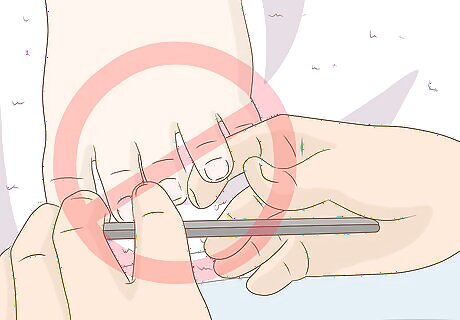
Avoid pedicures. The instruments used for manicures and pedicures can harbor and spread bacteria if they aren’t sterilized properly. Instead, practice proper foot hygiene on a daily basis and treat yourself to a weekly or semimonthly self-pedicure. If you do go for a pedicure, bring your own tools whenever possible. Never share pedicure instruments with others, especially emery boards. They are porous and cannot be sterilized properly, meaning they can trap and spread bacterial and fungi.
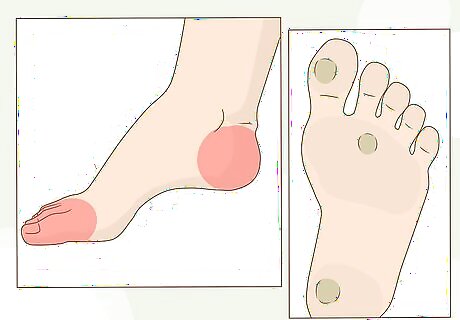
Understand the connection between your feet and diabetes. Because diabetes can restrict circulation, it can cause health problems with the extremities, especially the hands and feet. Diabetes can cause neuropathy, or nerve damage, making it harder to detect injuries on your feet. The disease can also prevent your body from healing as quickly as it should, which increases the risk of infection. Diabetics should examine their feet every day for injuries like blisters, calluses, scaly skin patches, cracking skin, and cuts and wounds. Treat wounds immediately, and make sure your doctor looks at your feet at every visit.
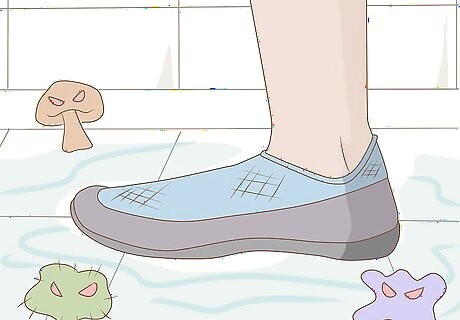
Prevent communicable diseases and infections. There are several bacterial, viral, and fungal problems that can adversely affect the health and appearance of your feet, including athlete’s foot, warts, and nail fungus. When using public swimming pools or showers (such as at hotels or gyms), wear water shoes or flip flops to protect your feet from possibly contaminated water. Symptoms of athlete’s foot include burning, itching, redness, and peeling. Warts are rough, grainy growths on the skin that may have black pinpoints scattered throughout. Nail fungus, which can enter the toenail through a crack or break, can cause nails to become brittle, thick, and discolored.
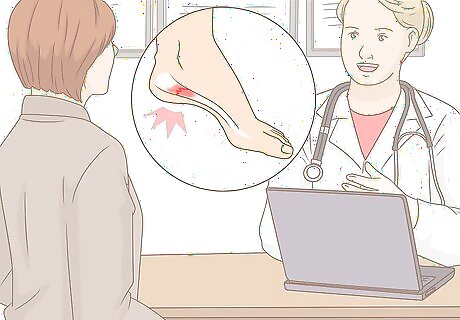
Address foot pain. Chronic foot pain is never normal, and should always be addressed with a medical practitioner. It can be a sign of plantar fasciitis, a stabbing pain and inflammation down the bottom center of the foot, which needs to be treated with therapy, orthotics, or possibly surgery. Aging, extreme cold, and joint pain can also cause foot pain, but if you frequently experience pain in your feet, talk to your doctor.
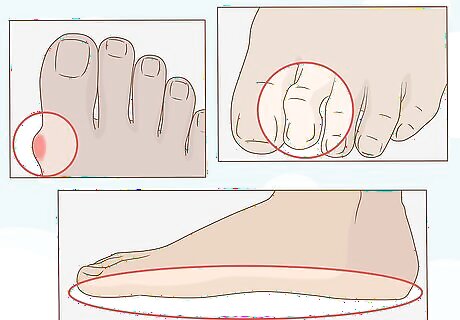
Recognize common problems. There are many common medical problems that can cause foot pain and irritation, or make you embarrassed about the look of your feet. Sometimes there is nothing you can do about these conditions, but many can be treated with a little attention, orthotics, or perhaps medical attention. Some of the most common conditions involving the feet include: A bunion, which is a protruding bone that sticks out from the side of your foot where the big toe meets the foot. Bunions can cause pain, but unless the pain is severe, shoe inserts and cushions are usually favored over surgery. Hammertoes, which occur when the toes begin to bend downward at the middle joint because of out-of-balance muscles. This condition can be treated with proper footwear, foot supports, or possibly surgery. Having flat feet, when the entire sole of your foot makes contact with the ground. It is treated with strengthening exercises, arch supporting inserts, or orthotics. Calluses and corns, which are patches of thick, hard skin caused by constant pressure and rubbing. They can be trimmed or removed medically, treated with medicated pads and patches, or softened with soaking and gentle scrubbing with pumice. However, see a podiatrist if you have a corn or callus that goes deep into your foot, as it may need to be removed in an office. Gout, which is characterized by swelling, stiffness, pain, and redness of the joints in the feet, especially the big toe, as well as the ankles and knees. Gout is a form of arthritis and is treated with anti-inflammatory drugs.




















Comments
0 comment